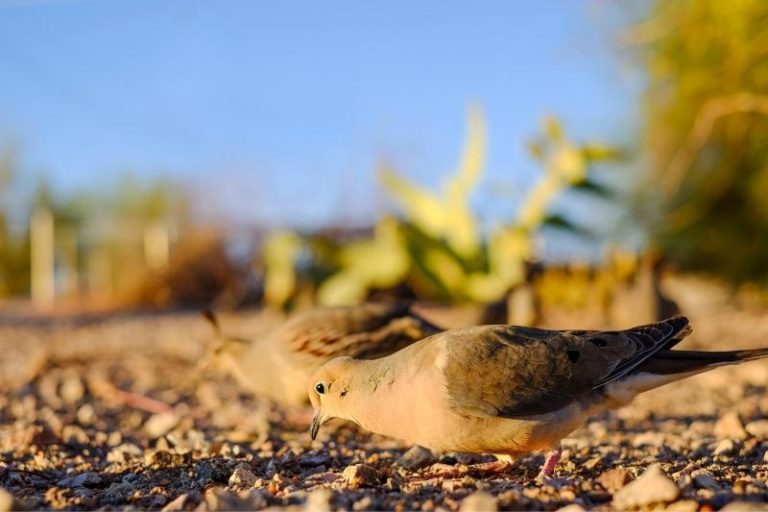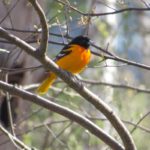The mourning dove diet is made up primarily of seeds. On the farm, they love seeds from crops and grain. In our gardens, mourning doves will eat seeds from trees, grass, and flowering plants.
But mourning doves have their favorite varieties and will visit areas where they are abundant. If you want to enjoy watching more mourning doves, then keep reading to learn the best types of seeds to plant for mourning doves in your garden.
The Diet of the Mourning Dove
Ninety-nine percent of a mourning dove’s diet is made up of seeds. This includes seeds from trees, agricultural products, grasses, and flowering plants. Let’s take a look at which ones are their favorites.
What Types of Seeds Do Mourning Doves Eat?
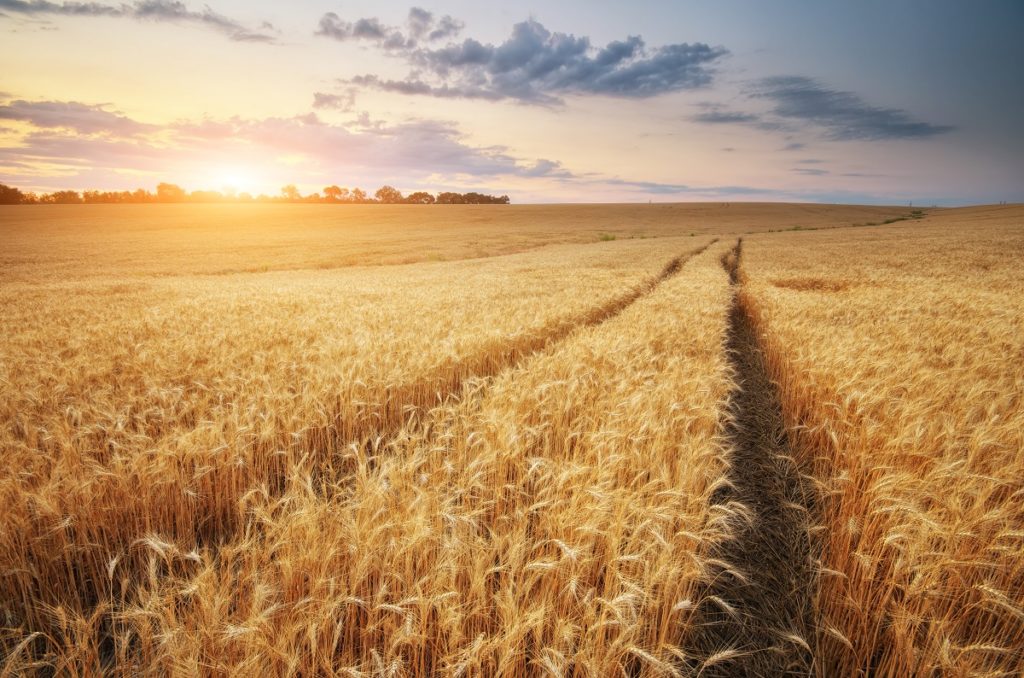
Grain and agriculturally produced seeds are a mainstay of the mourning dove diet. Grains such as wheat, corn, millet, and oats are primary food sources for the mourning dove. Hulled peanuts, sesame seeds, and black oil sunflower seeds are all welcome in their diet.
To a lesser degree, they will also eat Barley, buckwheat, cowpea, rice, rye, or soybean.
Their favorite tree seeds include Pine and Sweetgum trees.
Grass seeds include Bristlegrasses, broadleaf signalgrass, canary grasses, Goosegrass, Johnsongrass, panicums, paspalums, switchgrasses.
Flower plant seeds are the common sunflower, amaranth, hemp, pokeberry, Smartweed, and various euphorbs.
What Else Do Mourning Doves Eat Besides Seeds?
While seeds are their favorite, Mourning doves will eat fruits or berries occasionally.
They will also consume a certain amount of grit daily to help with digestion. The grit is found in sandy soil or along the edges of gravel roads.
A source of fresh water is also an important component of the mourning dove’s diet since it helps soften the seeds and support digestion. They will drink from ponds, streams, and small puddles in the morning and after eating.
What Do Mourning Doves Eat In Winter?
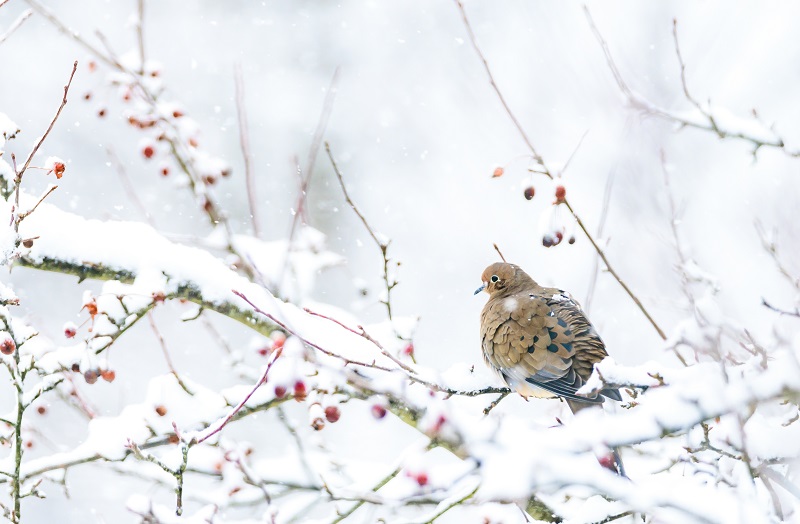
Mourning doves still eat a lot of seeds during the winter. Crops that are sown in the autumn months, such as winter wheat or Barley, will produce seeds later in the year.
Perennial grasses and pine trees will also still be dropping seeds in the colder months.
What Do Baby Mourning Doves Eat?
Just after hatching, the parents will feed baby doves crop milk. This special milk is produced from the gullets of both the male and female mourning dove.
Crop milk is full of nutrition and helps the baby birds grow rapidly. They only need it for the first few days. After about three days, the parents will start to feed them seeds.
Baby mourning doves grow fast and can leave the nest after just two weeks. At three weeks of age, they can start to forage for seed independently.
Do Mourning Dove Visit Our Bird Feeders?
Yes, but they are ground-feeding birds. You can buy a mourning dove feeder that is designed at the appropriate height. Or choose a platform feeder that is set just slightly off the ground.
If you have hanging feeders in the yard and food is scarce, they will occasionally fly up. But more often, they will be found underneath the feeder eating the seeds that have fallen to the ground.
Where Do Mourning Doves Forage For Food?
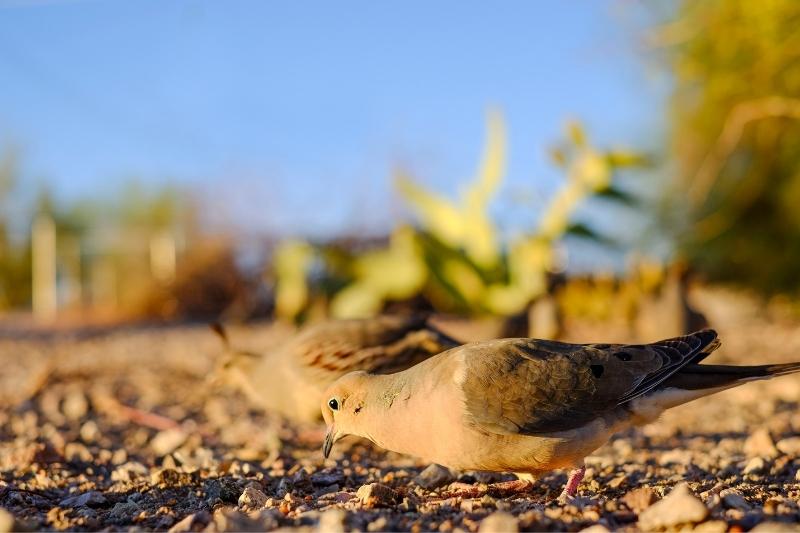
Mourning doves like to forage in open areas. Prairies, open grasslands, pastures, and farms are prime feeding areas for doves.
Mourning doves will also forage in fields where they find their favorite crops. But they will also forage in agricultural areas with high concentrations of grasses or along the forest edges.
They prefer feeding from the bare ground rather than in heavily mulched areas. Instead of scratching under leaves or weeds for their food, they locate their food by sight or by watching other birds feed.
If they find a spot with plentiful seeds, they will keep returning to the same location. They will happily take advantage of spilled seeds on a farm or near livestock feeding areas during harvest time.
Farmers May Create a Habitat To Attract Mourning Doves For Sport
In many states, mourning doves are a popular game bird and hunted for both sport and meat. Farmers will create fields specifically to attract the mourning dove for recreational hunting.
Hunting helps keep the population down, bringing the farmers extra income from their fields.
Areas that are cultivated to attract mourning doves should include more than one crop planted in adjacent fields. Alternating rows of grain and vegetation crops native to the area is a good strategy.
When planting fields for dove hunting, keep in mind their feeding preferences. They prefer to feed on the bare ground where seeds are available on the surface. This is easy during harvest months when the seeds will be scattered on the ground providing good feeding opportunities for the birds.
Interesting Facts About The Feeding Behaviors of Mourning Doves
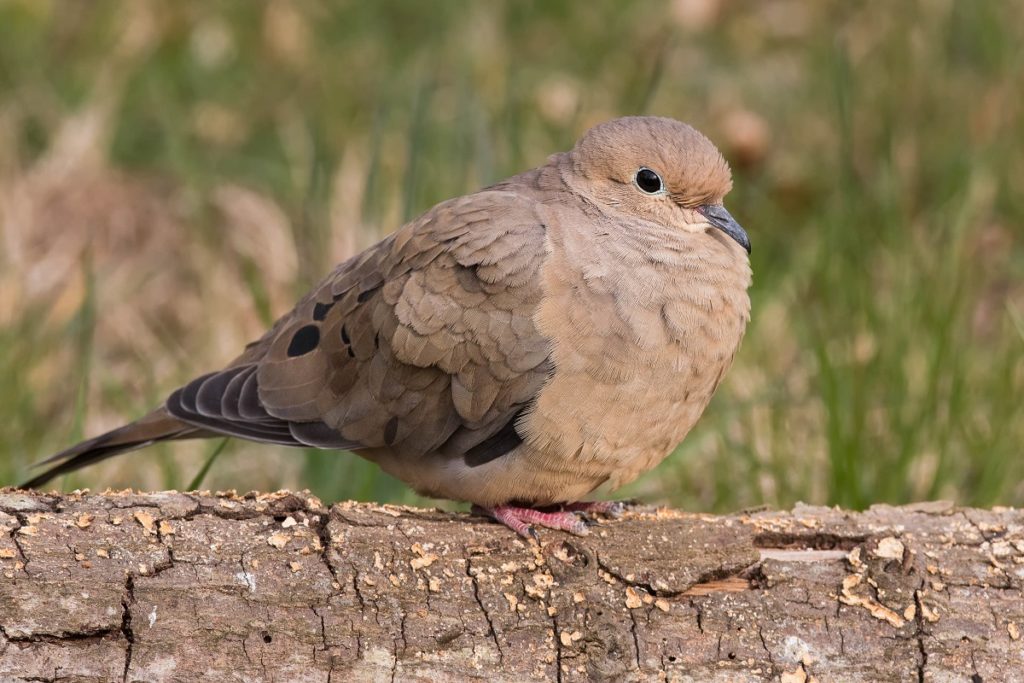
The mourning dove eats between 12 to 20 percent of its body weight per day.
Mourning doves have a particular part of their anatomy called the crop. The crop is an enlargement of the esophagus, where they store seeds during foraging.
They will continue to feed until their crop is full, then return to a safe roosting space where they can digest the seeds.
If you watch a mourning dove while they are foraging, you will notice they are constantly pecking the ground. Instead of scratching for food like a chicken, they will eat the seeds right from the ground with their beak.
What Time of the Day Do Mourning Doves Forage?
Dove’s feed during the day and stop feeding when it is dark. During the day, they may travel up to 40 miles to find food.
Summary
The morning dove diet consists primarily of seeds from flowering plants, trees, and crops. They are one of the most common backyard birds found throughout North America. And are an important part of many cultures, signifying love, hope, and peace.
One of the more interesting aspects of this bird is its feeding behavior. They prefer to feed off the ground rather than flocking to our hanging bird feeders like many other backyard birds.
If you want to attract more mourning doves to your yard, consider planting a few of their favorite food sources, such as pine trees, plants, and grasses, so that they will have a year-round supply of food.
Supplement your plantings with a mourning dove feeder and fill it with millet and black oil sunflower seeds, and these little beauties will flock to your backyard.
Like it? Pin It!

